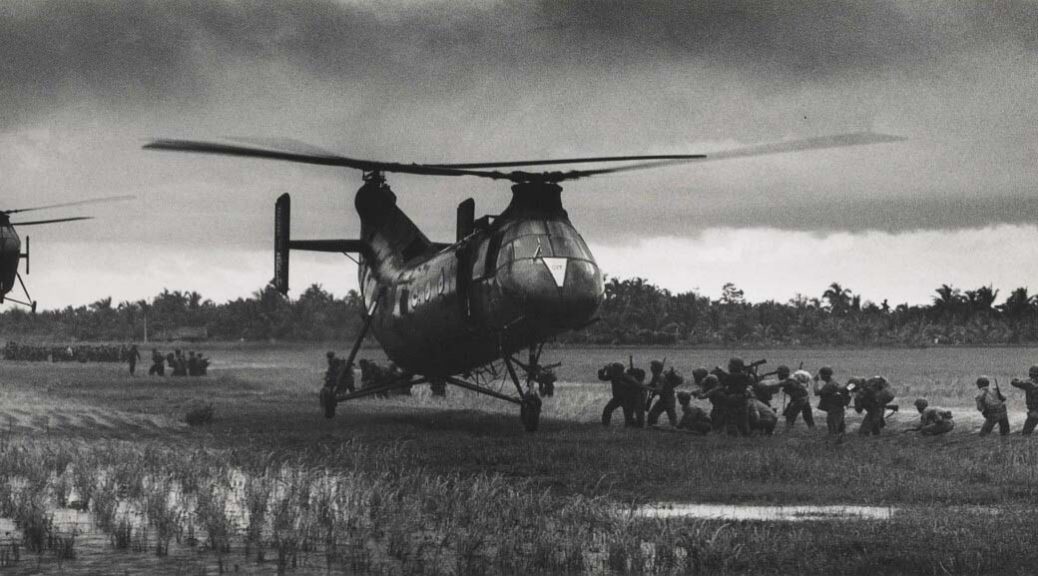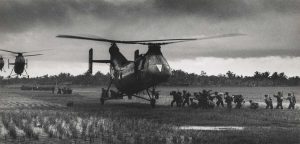Hello! This is my first blog as the new Digital Production Service Manager, and I’d like to take this opportunity to take you, the reader, through my journey of discovering the treasures that the Duke Digital Collections program offers. To personalize this task, I explored the materials related to my family’s journey to the United States. First, I should contextualize. After migrating from south China in the mid-1800s, my family fled Vietnam in the late 1970s and we left with the bare necessities – mainly food, clothes, and essential documents. All I have now are a few family pictures from that era and vividly told stories from my parents to help me connect the dots of my family’s history.
When I started delving into Duke’s Digital Collections, it was heartening to find materials of China, Vietnam, and even anti-war materials in the U.S. The following are some materials and collections that I’d like to highlight.
The Sidney D. Gamble Photographs offer over 5,000 photographs of China in the early 20th century. Images of everyday life in China and landscapes are available in this collection.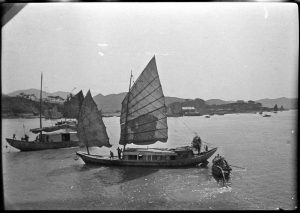 The above image from the Gamble collection, is that of a junk, or houseboat, photographed in the early 1900s. When my family fled Vietnam, fifty people crammed into a similar vessel and sailed in the dead of night along the Gulf of Tonkin. My parents spoke of how they were guided by the moonlight and how fearful they were of the junk catching fire from cooking rice.
The above image from the Gamble collection, is that of a junk, or houseboat, photographed in the early 1900s. When my family fled Vietnam, fifty people crammed into a similar vessel and sailed in the dead of night along the Gulf of Tonkin. My parents spoke of how they were guided by the moonlight and how fearful they were of the junk catching fire from cooking rice.
The African American Soldier’s Vietnam War photograph album collection offers these gorgeous images of Vietnam. This is the country that was home for multiple generations for my family, and up until the war, it was a good life. I am astounded and grateful that these postcards were collected by an American soldier in the middle of war. Considering that I grew up in Los Angeles, California, I have no sense of the world that my parents inhabited, and these images help me appreciate their stories even more. 
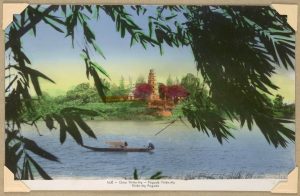 On the other side of the planet, there were efforts to stop the war and it was intriguing to see a variety of digital collections depicting these perspectives through art and documentary photography. The image below is that of a poster from the Italian Cultural Posters collection depicting Uncle Sam and the Viet Cong.
On the other side of the planet, there were efforts to stop the war and it was intriguing to see a variety of digital collections depicting these perspectives through art and documentary photography. The image below is that of a poster from the Italian Cultural Posters collection depicting Uncle Sam and the Viet Cong.
In addition to capturing street scenes in London, the Ronald Reis Collection, includes images of Vietnam during the war and anti-war effort in the United States. The image below is that of a demonstration in Bryant Park in New York City. I recognize that the conflict was fought on multiple fronts and am grateful for these demonstrations, as they ultimately led to the end of the war.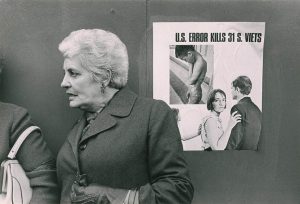 Lastly, the James Karales Photos collection depicts Vietnam during the war. The image below, titled “Soldiers leaving on helicopter” is one that reminds me of my uncle who left with the American soldiers and started a new life in the United States. In 1980, thanks to the Family Reunification Act, the aid of the American Red Cross, and my uncle’s sponsorship, we started a new chapter in America.
Lastly, the James Karales Photos collection depicts Vietnam during the war. The image below, titled “Soldiers leaving on helicopter” is one that reminds me of my uncle who left with the American soldiers and started a new life in the United States. In 1980, thanks to the Family Reunification Act, the aid of the American Red Cross, and my uncle’s sponsorship, we started a new chapter in America.
Perhaps this is typical of the immigrant experience, but it still is important to put into words. Not every community has the resources and the privilege to be remembered, and where there are materials to help piece those stories together, they are absolutely valued and appreciated. Thank you, Duke University Libraries, for making these materials available.


